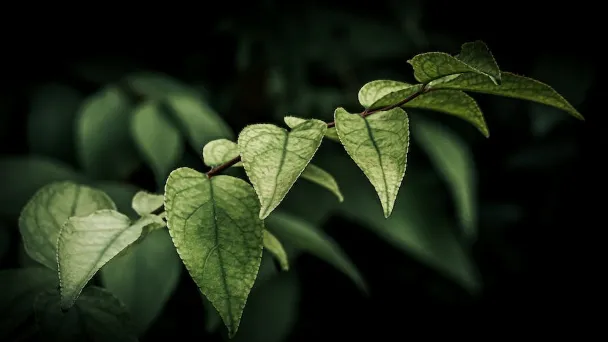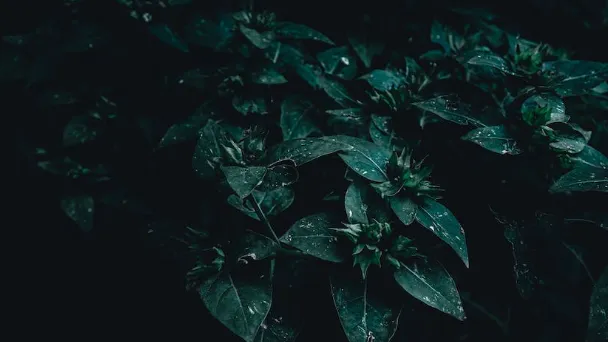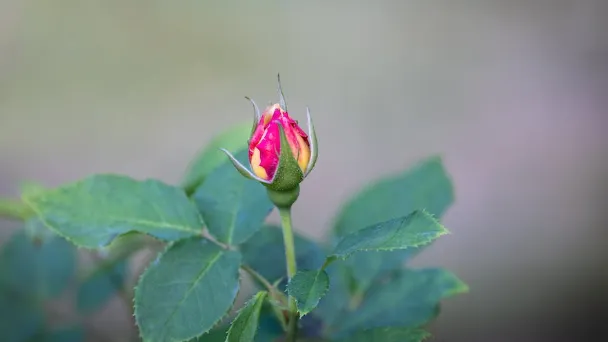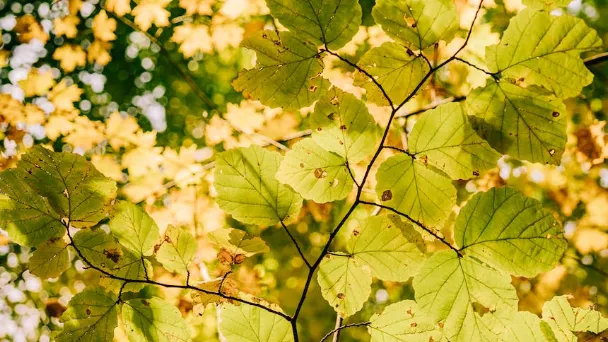Why Are Your Gardenia Leaves Yellow - How to Fix
Written by Ivy
Feb 08 2023

Gardenia leaves turning yellow can ruin the look of your shrub, and the fear of losing your shrub is understandable. Be assured, however, that yellow leaves rarely indicate serious health issues.
Actually, gardenias are notoriously delicate and difficult to grow. What, however, brings on the yellowing of your gardenia's leaves, and how can you resolve the issue?
Gardenia leaf yellowing can be an indication of a variety of issues, including poor soil pH, too much moisture in the soil, and drought stress. But wait, don't panic! If the leaves on your gardenia are yellowing, identify the problem as soon as possible and apply the appropriate treatment. Your prized shrub will soon restore the color of its leaves to a gorgeous, vibrant deep green..
Continue reading to learn the possible causes of yellowing gardenia leaves as well as how to spot and pinpoint the problem causing the discoloration of foliage.
The Gardenia's Basic Needs

Gardenias can be grown either inside or outside. They produce lovely flowers with heavenly scents.
This plant prefers:
- Acidic, well drained soil
- Full sun to partial shade
- High humidity
- Proper ventilation
When these basic needs aren't met, the plant begins to fail. Yellowing leaves are typically the first sign that something is wrong.
Yellow Foliage: What It Means
If many of your gardenia's older leaves are turning yellow, it's possible that root rot from overwatering or poor soil drainage is killing the plant. If leaves turn yellow during the warmer months, iron and/or magnesium deficiency are probably to blame.Winter and early spring are troubleshooting times for gardenias. The cold is usually to blame for flower bud loss and yellowing foliage. At this point, adding nutrients might be unnecessary.
Be calm and wait until warmer weather returns so that growth can resume before getting alarmed.
If leaves turn yellow during the warmer months, iron and/or magnesium deficiency are probably to blame. Initially, old leaves are impacted by magnesium deficiency.
Sprinkle a teaspoon of Epsom salts around the plant and water in. New leaves are first impacted by iron deficiency. Apply iron chelates, and repeat the treatment in the summer.
Why Gardenia Plant Leaves Turn Yellow
Understanding the most frequent causes of the development of yellow leaves is the first step in reviving your gardenia plant.
1. Over-Watering Or Under-Watering
The most frequent offender is usually improper watering. Yellow leaves may eventually appear as a result of both inadequate and excessive watering practices.
Poor soil drainage, for instance, may be a result of overwatering. This prevents the plant roots from absorbing the necessary nutrients for the plant to thrive. In general, gardenia plants should be fine with one inch of water per week.
If you're still having trouble getting the right amount of water into the soil, an inexpensive but worthwhile investment is a soil moisture meter.
2. Poor Soil Drainage and Root Rotting
Even if you're giving the gardenia plant the right amount of water, the soil's condition could be preventing the water from draining out properly. The root rot that frequently causes gardenia leaves to turn yellow is caused by poor soil drainage, which will in turn cause plant diseases.
Your gardenia plant won't only die from poor soil drainage. The emergence of fungus gnats is just one of the unwanted issues it will bring about. These gnats can become a big nuisance so it's important to you resolve this as soon as possible.
3. Gardenia is Not Getting Enough Sunlight
Due to their temperamental nature, gardenia plants need just the right amount of sunlight to grow and flourish. If a plant receives too much or too little sunlight, the leaves may turn yellow or brown. The gardenia plant should be placed in a location that provides it with plenty of morning sunlight and afternoon partial shade.

4. Lack of Nutrients in Soil
For gardenia plants to flourish, the pH of the soil must be between 5 and 6.5. An off-balanced soil pH could prevent the plant from absorbing important nutrients. For the gardenia plant, for instance, iron, nitrogen, zinc, and magnesium are all essential nutrients.
Any one of these nutrient deficiencies may result in yellowing of the leaves. A plant may have an iron deficiency if its yellow tips are green at the branch bases and its yellow leaves are green at the tips.
How to Save a Gardenia Plant With Yellow Leaves
Now that you are aware of the most frequent causes of yellow or brown leaves on gardenia plants, here are some steps you could take to revive the plant.
1. Maintain Proper Soil Conditions
If you are unsure of the pH levels in your soil, test it with a soil tester kit. Check that the soil pH is between 5 to 6.5. If it falls outside of this range, you might need to adjust the conditions by adding peat moss, manure, or other organic matter.
2. Maintain Proper Humidity & Temperature
The gardenia plant must be grown in conditions with the right humidity and temperature. Finding a location in the home with a daytime temperature of between 65 and 70 degrees Fahrenheit is advised. Between 60 and 65 degrees Fahrenheit are the possible low temperatures at night.
A daily misting could work wonders for a gardenia plant to handle humidity. However, if you reside in a region with high humidity levels, this wouldn't be necessary.
3. Maintain Good Fertilize Balance
A good soil nutrient balance is important for the gardenia plant to thrive. You should fertilize the soil every two to four weeks during the growing season (typically from March through October). In the off-season, you can cut back on fertilizer applications. For this, products like Perfect Plants liquid fertilizer are ideal.
How to Prevent Gardenia Leaves from Turning Yellow
1. Plant Your Gardenia Plant During Spring
Gardenias perform the best during the day from 65 to 70 degrees and at night from 60 to 65 degrees. The Gardenia should be planted in the late spring if springs there are colder than in your area. You may want to plant it in the late winter and early spring if it is hotter.
2. Choose a Place With Light Shade Or Full Sun
You must be aware that a Gardenia needs 6 to 8 hours of direct sunlight per day on average. To prevent your plant from getting scorched, find a location with morning light and afternoon shade. For indoor plants, try to put your plant next to a window and keep potted Gardenias out of direct sunlight. You should at least put the outdoor Gardenia on a balcony or a deck with less shade.
3.Test for a PH of 5 to 6 on Your Soil
Since Gardenia prefer acidic soil, it is the best soil to plant them in. When deciding where to grow your Gardenia, you should test the soil. You can buy a probe at the store or make the soil acidic by purchasing sulfur and adding the right quantity to the ground. The soil will be too alkaline if you plant your Gardenia close to a foundation.

4. Move the Plant to Soil Rich in Nutrients
You can purchase peat moss to add to organic soil, or you can make compost at home by combining water, food scraps, and dead plants. Dig a hole, set your Gardenia inside, and then add soil to the hole to fill it halfway.
Takeaway
Gardenia plants occasionally become yellow simply from aging. This is typically the result of your tree changing or of natural seasonal shedding. The leading causes for the Gardenia turn yellow are overwatering, underwatering, change in the level of sunlight and mineral deficiency. As long as you use their particular tools and methods, taking care of your Gardenia plant won't be too difficult. Your gardenia plant should be grown in a pot with well-drained soil, nutrient-rich fertilizers, insecticides, and acidic soil to ensure success.
Latest Updated
- Why Are Your Gardenia Leaves Yellow - How to Fix
- Cape Jasmine (Gardenia Jasminoides) Care & Propagation Guide
- Reasons Hydrangea Leaves Turning Yellow - Find the Solutions
- Panicle Hydrangea Care & Propagation Guide
- Lemon Tree Leaves Turning Yellow & How to Save It
- Why Are My Tomato Leaves Turning Yellow - 7 Reasons & Solutions
- How To Save Your Sunburned Tomato Leaves
- Beefsteak Tomatoes Grow & Care Guide
- Beefsteak Tomatoes Profile
- Why Are My Orchid Leaves Turning Yellow - Common Causes & Fixs
Popular Articles
- Winter maintenance of Antirrhinum Majus
- How to Grow Terminalia Mantaly Tree
- How to Grow and Care for Crossostephium Chinense
- How to grow Antirrhinum Majus in spring
- Peristeria Elata (Dove Orchid) Profile: Info & Care Guide
- Underwatered Snake Plant (Sansevieria Trifasciata) - Signs And How To Fix
- How to Care for Brazilian Jasmine Plant (Mandevilla Sanderi)
- Rosa Chinensis (China Rose): Plant Growing & Care Tips
- How to Grow & Care for Graptopetalum Purple Delight in Summer
- How to Care for Baby Sun Rose (Aptenia Cordifolia)